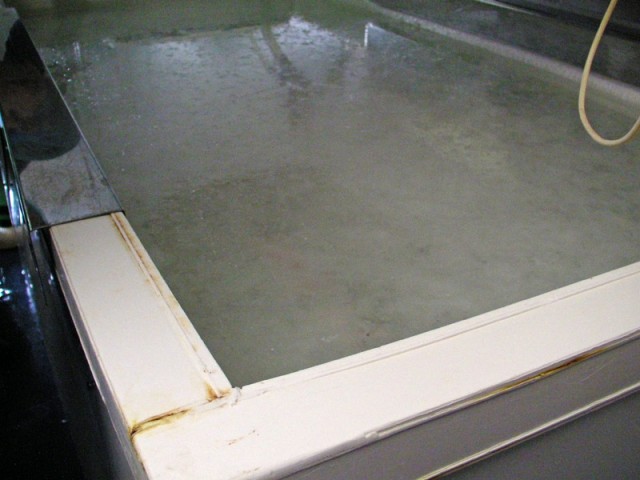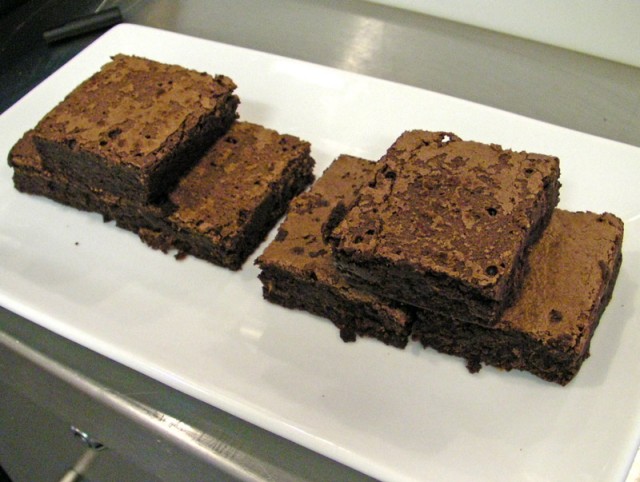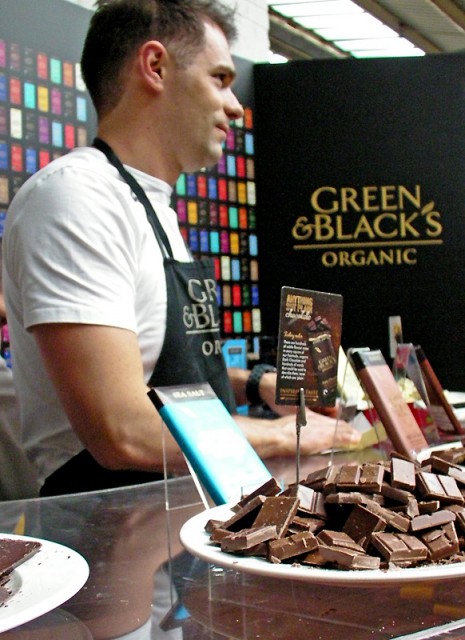Chocolate & Sea Salt: A Marriage Made In Anglesey
We visit the island of Anglesey with Green & Black’s to discover how the salt for their new Sea Salt bar is made.
The story of Halen Môn, The Anglesey Sea Salt Company reflects that of many an artisan chocolatier. Driven by passion, a sense of adventure and continuous experimentation, founders David and Alison Lea-Wilson have turned a small business into a world class product, enjoyed by the likes of Heston Blumenthal and even President Obama.
But it wasn’t just a love of salt that drove them. It was the love of the island of Anglesey off the North Wales coast, and their desire to build a business there that would support them and give something back to the community.
David & Alison started out growing oysters. That business evolved into a sea-life zoo where tourists could come and see the local marine life, but tourism is very seasonal and they needed something that could bring in money all year round.
In 1996, they hit on the idea of making sea salt, starting out experimenting with a saucepan of sea water on the family Aga. Since then, they’ve perfected the process and grown into an internationally recognised brand employing 15 people, while maintaining their artisan roots.
Others have tried to replicate their success, but David believes they have the perfect location for salt making. The Gulf Stream brings in fresh Atlantic water where the tide funnels it up the Menai Strait twice a day. The lack of industry in the area and natural filtering provided by a sand bank and mussel bed mean that nature has already done a lot of the hard work for them. The finished product is pure, white crystals that have a sweet edge and no chemical harshness.
With their salt sold around the world and used by 8 of the 50 top chefs in the world, it’s no surprise that big brands are keen to talk to them. But the couple were still excited with Green & Black’s came knocking on the door during the development of their Sea Salt bar.
The chocolate company had quite specific requirements that meant Halen Môn had to come up with a bespoke salt flake size just for this bar. But just how do you make salt crystals to such a precise specification? More to the point, how do you get salt crystals out of sea water in the first place?
This is a question that has fascinated me for a while, so I jumped at the chance to visit Halen Môn with the Green & Black’s team to find out for myself.
It turns out that it’s not pure magic and faerie dust. It takes science, skill and a lot of water.
The salt making process
Every day, Halen Môn pump the equivalent of a swimming pool full of water through two small pipes that extend out into the Menai Strait. The water is fresh from the North Atlantic and already naturally filtered thanks to the sand bank and mussel bed. Inside the factory, it passes through carbon and UV filters before being passed to two large tanks.
Here the water is heated under a vacuum, concentrating the salt water. Before salt crystals have a chance to form, it then gets transferred into shallow evaporation tanks. These are heated from above in a room that feels something like a hot sauna. The water evaporates slowly until it reaches the point where crystals start to form on the surface.
The crystals grow so large that eventually they sink to the bottom of the tanks. After a day, the salt is carefully harvested from the bottom with shovels.
One of the secrets of Halen Môn’s success is the way they then rinse the salt crystals. This is carefully done by hand; a repetitive and time consuming task but an essential part of the process. Doing it manually also gives the salt maker a chance to inspect and carefully remove any tiny impurities that may have made it through. The result of this rinsing process are flakes of salt that glisten and shine like jewels in the light.
The salt flakes are then left to drain for about a day, before being transferred into low ovens to drive off remaining moisture.
The precise temperature of the evaporation tanks has an effect on the flake size, but to get crystals of exactly they right size for Green & Black’s, the salt needs to be sieved by hand. This is another time consuming process, but they found it worked much better than using machinery. The smaller salt crystals required simply fall through the sieve, leaving behind larger flakes which can be used in other products, or simply redisolved into brine.
Taste the difference
Green & Black’s did a lot of testing of different salts and crystal sizes for their new bar. Micah Carr-Hill is Head Of Taste at Green & Black’s and took us through a very simple taste test to prove the point. We tried a square of milk chocolate with table salt, rock salt, large Halen Môn crystals, and finally smaller crystals.
The first thing we noticed was the huge difference in flavour between the table salt, rock salt and Halen Môn. The first two were harsh and bitter, while the sea salt had a sweetness to it that enhanced the flavour of the chocolate rather than fought against it.
The crystal size made a big difference to the overall flavour. The larger flakes give a more intense salty burst, which I personally quite liked, but the smaller crystals give a much more even flavour, which most people will find more appealing.
The choice of chocolate is vital too. There’s already a healthy selection of dark chocolate bars with sea salt on the market, but Micah believes milk chocolate works better. Green & Black’s use a 37% Dominican Republic origin milk chocolate, and the salt helps cut through some of the sweetness, but also enhances the natural caramel notes in the chocolate. I use Halen Môn’s Vanilla Salt to make my own salted caramels for exactly this reason.
Brandt Maybury, Green & Black’s Taste Specialist prepared some samples to illustrate the difference. Along with some salt water ganache truffles, he prepared two batches of brownies; one with sea salt, one without. They were both great brownies but the difference was clear, with the salted brownie having a much fuller, more interesting flavour.
The combination of chocolate and salt is still new to many people of course, but it’s one of those things you only need to try once to be hooked. Brandt tells me he saw this first hand at the London Coffee Festival last weekend, where the company had a stand. Many visitors thought it was an odd thing to add to chocolate – until they tried it. By the end of the four day festival, it was clear the Sea Salt bar was one of the biggest sellers.
Of course the great thing about Green & Black’s is that it’s available just about everywhere. You’ll find the Sea Salt bar in your local supermarket and a myriad of places online.
If you’re new to the idea of chocolate & salt, then it’s well worth trying – as is the rest of Halen Môn’s wonderful artisan salt range. You’ll find that for sale on their website, but if you’re visiting Anglesey – and you really should, it’s a beautiful island – then you can stop by their on-site shop where a full range is available to buy.
Photo Gallery
With thanks to Micah Carr-Hill and Brandt Maybury of Green & Black’s and David and Alison Lea-Wilson of The Anglesey Sea Salt Company for their wonderful hospitality.
Information
- Filed under green & black, halen mon, sea salt.









